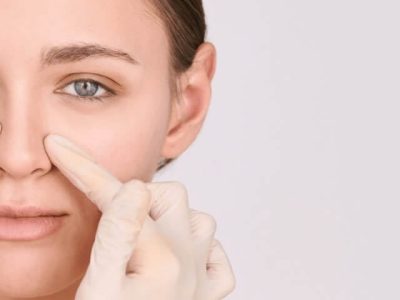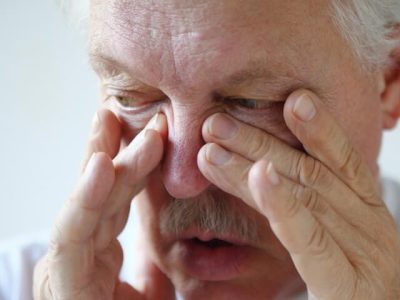Snoring and Sleep Apnea
Understanding Snoring
Snoring is a common social concern affecting approximately 40-50% of the population. It can disrupt the sleep of the individual and those around them. Snoring tends to worsen with age and weight gain. When evaluating snoring, it is important to consider multiple factors such as the patient’s age, body mass index (BMI), and the anatomy of the nose, nasopharynx (including adenoids), soft palate, and tongue base.
While snoring alone may be seen as a nuisance, it can also be a symptom of more serious conditions. Patients who snore should be assessed for breathing interruptions during sleep, such as apnea (complete cessation of airflow) or hypopnea (partial reduction of airflow). These interruptions can affect the entire body, including the heart, brain, and other vital systems.


What Causes Snoring?
Snoring results from the partial blockage of the airway during sleep. Several factors contribute to this:
- Anatomical variations: Deviated nasal septum, enlarged tonsils or adenoids, elongated soft palate, or excess tissue around the throat.
- Obesity: Excess fatty tissue around the neck narrows the airway.
- Aging: Leads to decreased muscle tone in the throat.
- Lifestyle factors: Alcohol use, smoking, and sleeping position (back sleeping) can worsen snoring.
A thorough evaluation includes a detailed medical history and physical examination of the upper airway to identify contributing factors and guide treatment.
Sleep Apnea: More Than Just Snoring
Sleep apnea is a condition characterized by repeated pauses in breathing during sleep, often accompanied by loud snoring. Unlike harmless snoring, sleep apnea is a medical disorder that can have serious consequences.
Types of Sleep Apnea:
- Obstructive Sleep Apnea (OSA): Caused by physical obstruction of the airway.
- Central Sleep Apnea: Due to the brain’s failure to send proper signals to breathe.
- Mixed Sleep Apnea: A combination of both obstructive and central causes.
Why Is Sleep Apnea Serious?
Obstructive sleep apnea syndrome (OSAS) is recognized as a major risk factor for several serious conditions including:
- Hypertension (high blood pressure)
- Heart rhythm disturbances and heart attacks
- Stroke
- Daytime fatigue and cognitive impairments
- Metabolic disorders such as diabetes
The repeated episodes of oxygen deprivation and sleep fragmentation affect nearly every system in the body, reducing quality of life and increasing mortality risk.
Diagnosis of Sleep Apnea
Diagnosing sleep apnea involves:
- Detailed assessment of symptoms and risk factors including weight, lifestyle, and airway anatomy.
- Polysomnography (Sleep Study): The gold standard test that monitors breathing patterns, oxygen levels, and brain activity during sleep.
- Upper airway examination using endoscopy or imaging to identify anatomical causes.


Treatment Approaches
Lifestyle Modifications
First-line management focuses on:
- Weight control and diet
- Avoiding alcohol and sedatives before bedtime
- Changing sleep position, such as avoiding sleeping on the back
Medical Therapies
- Continuous Positive Airway Pressure (CPAP): A device that delivers pressurized air through a mask to keep the airway open during sleep.
Surgical Treatment
Surgery may be recommended when anatomical abnormalities cause persistent airway obstruction or if non-surgical treatments fail.
Surgical options include:
- Removal of enlarged tonsils and adenoids (especially in children)
- Correction of nasal obstructions (e.g., deviated septum)
- Procedures targeting the soft palate and tongue base
While snoring is a common and often socially disruptive problem, it may indicate underlying sleep apnea a condition that requires prompt diagnosis and treatment due to its serious health risks. If you or your child experience symptoms such as loud snoring, observed breathing pauses, or excessive daytime sleepiness, seek evaluation from an ENT and sleep specialist.
Frequently Asked Questions (FAQ)
HOW IS SNORING DIFFERENT FROM SLEEP APNEA?
Snoring is the sound made when airflow causes the tissues in the throat to vibrate during sleep. It’s usually harmless, although it can be disruptive to others.
Sleep apnea, on the other hand, is a medical condition in which breathing repeatedly stops and starts during sleep. It often involves loud snoring followed by pauses in breathing, gasping, or choking. Unlike simple snoring, sleep apnea can lead to serious health issues such as high blood pressure, heart disease, and daytime fatigue.
IS SLEEP APNEA DANGEROUS?
Yes, sleep apnea can be very dangerous if left untreated.
When breathing repeatedly stops during sleep, it reduces the amount of oxygen your body gets. Over time, this can lead to serious health problems, including:
- High blood pressure (hypertension)
- Heart disease and irregular heart rhythms
- Stroke
- Type 2 diabetes
- Chronic fatigue and daytime sleepiness
- Increased risk of car or work-related accidents due to daytime fatique
- Mood disorders such as depression and anxiety
In severe cases, untreated sleep apnea may even increase the risk of sudden cardiac events during sleep.
The good news? Sleep apnea is treatable, and with proper management, most people can significantly reduce the risks and improve their quality of life.
Treatment options include:
- Lifestyle changes (weight loss, avoiding alcohol, changing sleep position)
- CPAP therapy (Continuous Positive Airway Pressure)
- Oral appliances (mouthpieces that keep airways open)
- Surgery (in mmild and severe cases)
CAN WOMEN AND CHILDEREN HAVE SLEEP APNEA TOO?
Absolutely. Although it’s more common in men, sleep apnea affects many women—especially after menopause. However, women’s symptoms may be less obvious and include fatigue, insomnia, and depression rather than loud snoring.Pediatric sleep apnea is often caused by enlarged tonsils or adenoids. Symptoms in children may include loud snoring, restless sleep, bedwetting, behavioral issues, and poor academic performance.
WHAT IS CPAP THERAPY AND HOW DOES IT WORK?
CPAP stands for Continuous Positive Airway Pressure. It’s the most common and effective treatment for moderate to severe obstructive sleep apnea (OSA).
A CPAP machine uses a small motor to deliver a steady stream of air through a mask that you wear over your nose, or nose and mouth, while you sleep. This gentle air pressure keeps your airway open, preventing it from collapsing and blocking your breathing during the night.
How CPAP works:
- You wear a soft, comfortable mask connected to the machine via a hose.
- The machine delivers constant air pressure to keep your throat open.
- This prevents pauses in breathing, snoring, and improves oxygen flow.
Benefits of CPAP therapy include:
- Better sleep quality
- Increased daytime energy and focus
- Reduced risk of heart disease, stroke, and high blood pressure
- Improved mood and mental clarity
It may take a few nights to get used to, but with proper fitting and support, CPAP can be life-changing.






